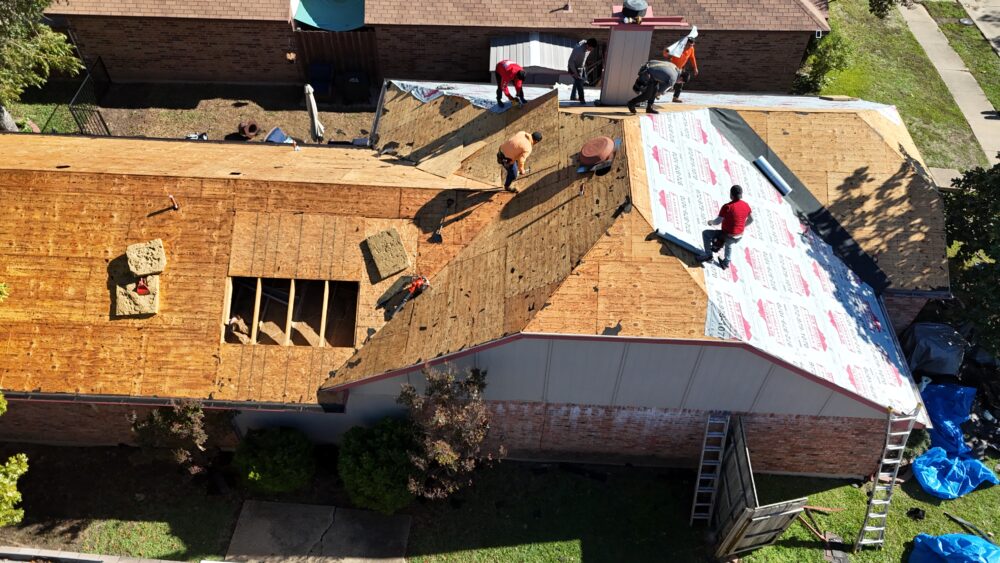Types of Damage Your Roof Can Suffer After a Storm
When dark clouds gather and fierce winds howl, your home’s first line of defense—your roof—takes the brunt of nature’s fury. At DFW Roofing Pro, we’ve seen firsthand how devastating storm damage can be to residential and commercial roofs across the Dallas-Fort Worth metroplex.
Storm damage isn’t always obvious from ground level, which is why many homeowners don’t realize their roof has been compromised until interior leaks appear. Understanding the types of damage your roof might suffer after severe weather is essential for protecting your most valuable investment—your home.

Wind Damage: The Invisible Threat
Strong winds can lift and remove shingles, creating vulnerable spots where water can penetrate. Even winds below hurricane strength (74+ mph) can cause significant damage, especially to aging roofs or those with pre-existing weaknesses.
High winds often damage roof edges and corners first, as these areas experience the strongest uplift forces. Missing shingles may seem minor, but they expose your roof’s underlayment to UV rays and moisture, dramatically shortening its lifespan.
Hail Impact: Small Stones, Big Problems
Hailstorms can be particularly destructive to roofing materials. Hailstones create divots in asphalt shingles, knocking off the protective granules that shield your roof from the elements. These impacts may not cause immediate leaks, but they significantly reduce your roof’s weather resistance and longevity.
For metal roofs, hail leaves dents that can compromise water flow and potentially crack protective coatings. On tile roofs, hailstones can crack or shatter individual tiles, requiring prompt replacement to prevent water infiltration.
Water Damage: Beyond The Obvious Leaks
Heavy rainfall during storms can exploit even tiny vulnerabilities in your roofing system. Water may seep under damaged flashing around chimneys, vents, and skylights, or back up behind clogged gutters.
This moisture invasion often manifests as water stains on ceilings and walls, but the most destructive damage happens out of sight. Water in your attic can soak insulation (reducing its effectiveness), promote mold growth, and eventually rot wooden structural components.
Debris Impact: When Nature Strikes
Severe storms turn tree branches, lawn furniture, and other objects into projectiles that can puncture or crack roofing materials. These impacts often create entry points for water and may compromise the structural integrity of your roof decking.
Even small debris like twigs and leaves can accumulate in valleys and gutters, trapping moisture against your roofing materials and accelerating deterioration through prolonged contact.
Lightning Strikes: Rare But Devastating
While direct lightning strikes to homes are relatively uncommon, they can cause catastrophic damage when they occur. Lightning can ignite fires, split wooden beams, or create shockwave damage that cracks tiles or shingles.
The extreme heat from a lightning strike can also melt asphalt shingles or metal components, requiring immediate professional assessment and repairs.
UV Damage: The Storm’s Aftermath
After severe weather strips away protective granules from asphalt shingles, increased exposure to ultraviolet radiation accelerates aging. This damage compounds over time, making your roof more vulnerable to future storms and shortening its overall lifespan.
The combination of storm impact and subsequent UV exposure creates a destructive cycle that demands prompt professional attention to prevent extensive deterioration.
Structural Stress: Hidden Dangers
Repeated wind pressure and moisture infiltration can weaken your roof’s structural components over time. Sagging areas, rippled shingle lines, or visible deformation along the roofline are warning signs that your roof has sustained structural damage requiring immediate professional evaluation.
Biological Growth: Post-Storm Problems
The moisture left behind after storms creates ideal conditions for algae, moss, and fungi to establish themselves on your roofing materials. Beyond the aesthetic issues, these organisms can trap moisture against your roof, accelerate decomposition of organic materials, and even pry up shingles as they grow.
Protecting Your Investment
Understanding these potential damages helps you recognize warning signs early. After any significant storm, a professional roof inspection from DFW Roofing Pro can identify hidden problems before they escalate into costly repairs. Don’t wait until interior leaks appear to address storm damage. Contact DFW Roofing Pro today for a comprehensive post-storm roof inspection to protect your home and your peace of mind.
